INTRODUCTION
Electronic media of communication bring into our homes audio and video signals in the form of various programmes. These programmes, which come on air as sound or both picture and sound, are either live or are already recorded or shot, processed, and transmitted. Electronic media viz. television, radio, and film (or motion picture) shares the following attributes:
Immediacy: These media can present topical, contemporary material live to the audience immediately.
Impermanence: Programme’s brought by these media are perishable images and sounds.
Diversity: They bring a variety, of programme material, which appeals a wide range of audiences. '
Flexibility: Material can be recorded edited, and duplicated for multiple playbacks.
In this lesson, we shall discuss about the basic aspects of radio Programme production.
PRESENTATION OF CONTENT
The content this lesson shall be presented as follows:
- Radio production formats
- Equipments for radio production
- Stages of radio programme production
- Types of radio programmes
- Writing for radio
RADIO PRODUCTION FORMATS
Many radio programmes are live. Some programmes on radio are recorded first and broadcast later. Some programmes are studio based, while others are recorded on outside locations. Here we shall discuss about a few different varieties of radio production formats:
LIVE on RECORDED RADIO PROGRAMMES: The programmes on radio and television can be live, pre-recorded or a combination of both. The nature of production calls for whether a programme will be produced live or recorded in advance and used later.
Live production involves the risk of production errors, as there are no "second chances". It has to be right the first time, which is the only time. However, live production is cheaper than recorded production techniques and sometimes easier and quicker.
Recorded productions allow supervision and control over quality. In this method, first recording of programmes is done. Editing and postproduction are done at a later time. This is an attempt at enhancement to further refine production value and quality while shooting. This can also combine with live production method. Portions or segments of programme can be recorded, edited and processed in advance and incorporated into a studio production using live talent.
STUDIO OR REMOTE (OUTSIDE ON LOCATION): Programmes can he produced within the controlled environment of an indoor studio which otters the required settings of a programme. Studio settings otter personnel control, light control, temperature control, sufficient power supply and access to supplementary production personnel, equipment accessories and spare parts and even telephones and change rooms.
Production can also be done at a temporary remote location. A unique setting can be achieved by thoughtful selection, planning and full use of a remote outside location. The realism and detail required for the quality and success of a production can also be obtained. However, in such a situation some production requirements, such as extensive lighting or elaborate sets are eliminated.
A combination of studio and remote production is also possible. Most newscasts combine anchors in the studio with reporters in the field. The anchor introduces a story from the studio and the reporter provides the details from the field.
OTHER PRODUCTION FORMATS
Audio production can be carried out in many ways depending on the types and source of programmes. Local live production employs station's own announcers or newscasters locally and play records and tapes, which they themselves own. Live-assist production is one way where stations retain local announcers and disc jockeys as the backbone of the programme and uses syndicated programming, such as reels of taped (prerecorded) music and satellite delivered music services.
In semi automation production a local radio station relies on the services of the syndicated programme producer. The music is typically played on large tape machines. When a break point for a programme announcement is reached, smaller cartridge tape machines are triggered to play by a sub audible cue tone on the master tape.
Turnkey automation refers to fully automated radio stations, which consists largely of a satellite dish and a control board. The satellite disk downlinks radio programmes. The services may also be localized such that new information is telephoned to the programme producer in time for the announcers many miles away to prepare the inserts.
EQUIPMENT FOR RADIO PROGRAMME PRODUCTION
The basic equipment to produce audio programme include the following:
- The studio desk (mixer console or control board or control panel)
- Microphones
- Turntable
- Compact Discs and Records
- Audiotapes
- Music and Sound effects
THE CONSOLE: The control board or console processes the sounds and voices during recording, editing, and dubbing. This mixes together the various programme sources to form the broadcast output. This is located in the central control point or control room. Three types of circuit functions are operated.
Programme circuits: A series of channels, their individual volume levels controlled by separate rotary faders.
Monitoring circuits: Visual (meter) and aural (headphone) means of measuring the individual sources or channels as well as the final mixed output.
Control circuits: Provision of communication with studio or outside by means of “talk back" or telephone line.
MICROPHONE: A microphone (mics, pronounced myke) is a transducer, which converts acoustic energy into electrical energy. Several types of microphones are available with audio pickup pattern characteristics designed to meet various recording requirements and situations. The directional property of microphones, which is also called the pickup pattern, is important for selecting the right kind of microphone. According to the pickup patterns, microphones can be classified as:
- Unidirectional microphones are appropriate for one or two people speaking side by side. Background noise is undesirable. These are also called cardioid mics because of their heartshaped pick-up pattern.
- Bi-directional microphones are used when two people directly facing each other.
- Omni-directional microphones are used for picking up a large number of people and are excellent for gathering background noise.
Stereo recording requires specially designed stereo microphones. It can also be achieved by using at least two microphones. One such approach is M-S (mid-side) miking. A tat-directional microphone picks up sound to the left and right and a super cardioid microphone picks up sound to the front. The output of both microphones is fed through a complicated circuit. X-Y miking is another method of stereo recording. Two cardioid microphones are placed next to each other. One angles to the left at a 45-degree angle and other to the right at 45 degree. This way both the microphones pick up sound from the center.
TURNTABLE: A turntable picks up information recorded on a disc or record and sends this information to the console for amplification, mixing, processing, and integration with other sound elements.
COMPACT DISCS AND RECORDS: Vinyl records or LPs are being replaced by high quality digital recordings made on compact disc. In playing a disc, most control desks have a "pre-fade”, ”pre-hear" or "audition" facility which enables the operator to listen to the track and adjust its volume before setting it up to play on the air. With a record, a glance at the grooves will often be sufficient to indicate whether there is a wide variation in dynamic range.
AUDIOTAPE: Sounds can be recorded in the field or in the studio onto audiotape at standard speeds. The audiotape used in studio may be in the form of continuous loop cartridges, or carts, or materials may be recorded on reel-to-reel audiotape machines. Digital Audio Tapes (DAT) record the signal in digital form in which the original electrical variations are represented by a series of pulses or bits of information.
MUSIC AND SOUND EFFECTS: Music and sound effects may be produced and recorded in CD or audio tape and may also be prerecorded on disc or audio tape and integrated into the programme material using the console or control board.
VOICE TERMS: The terminology used for production describes the placement (place of origin of voice) and quality of voices. The voices are indicated using easily understood designations, for instance, Voice 1, character’s name or Announcer # 1.
On mic (on mike): A voice or character is heard at a normal distance from a microphone.
Off Mic: When we want the voice to be heard as though coming from a distance or from the back of a room we use this term.
Fading on or fades on: We write this when we want the voice to sound as though is approaching the centre of action in the minds eye of the listener. Fade off or fading off could indicate the reverse process, where the voice starts at a normal distance from the microphone and then slowly moves away.
Reverb: is written to create suspense or heighten a mysterious mood when we want the voice to be heard with a slight echo or reverberation. It is normally written after the talents designation. To create the illusion of a telephone conversation, the notations “filtered a "behind barrier" can be used, or simply indicated as heard through a telephone.
SFX: The common abbreviation for sound effects is”SFX”. For sound effects indicate both the source and the nature of the material, for instances "CART: MUSIC UP FULL FOR FIVE SECONDS AND THEN UNDER". Music under or sneak under is used when the music or the sound effect is heard in the “background" (bg.) and then is heard at full volume after a character finishes a particular word.
Segue: We write, "segue" where one selection ends and the next selection begins immediately. We write "Cross fade" when one selection gradually fades out and the next selection gradually fades in.
Ad lib: Sometimes audio scripts include ”ad lib", which allows character or voices momentarily to create their own words keeping with the general tune, mood and purpose of the script.
STAGES OF RADIO PROGRAMME PRODUCTION
Radio productions are planned in three stages.
PRE-PRODUCTION: This is the planning and development stage. This begins with the generation of a script. Unless a script is developed it is difficult and there will be confusion on what type of programme you are producing. The script contains instructions and guidelines for the production of the programme.
PRODUCTION: The second stage is production. The entire material for the programme is recorded or organized at this stage. Selecting and positioning of the microphones, the type of tapes to be used, and selection at various sources at sound through the mixer are all part of this stage.
POST PRODUCTION: This stage generally includes editing Sounds recorded during production and dubbing if required, are the principal focus of post production. Putting together the previously recorded sound and selection of sound are important. The purpose of editing can be summarized as:
- To arrange recorded material into a more logical sequence
- To remove the uninteresting. Repetitive or technically acceptable portion.
- To compress the material in time.
- For creative effect to produce new juxtaposition of speech, music. sound and even silence.
WRITING FOR RADIO
We know that script is the backbone of production. So writing is an essential part of it. We write what type of sound would be required at a given situation and what would follow. Sound is the entire means of communication in radio. Sounds help create and enhance mental images.
Sounds have the unique capability of creating an environment for the listener. Through the creative use of various writing and production techniques, entire worlds can be created in the human mind. Many techniques are availed to create an environment with sound.
Language: The primary goal of language is to communicate ideas and information to be easily understood. The selection and using words and the combining of words into meaningful sentences are important for good production.
Words: Words are the primary tools for the expression or thoughts, ideas, and emotions, regardless of the medium. Words have meaning and power. Words need to be selected carefully. Use words that come close to reality. Informal, rather than formal words are preferred.
Sentences: Sentences are the principal units of organised thought. The keys to construct effective sentences are clarity, simplicity, conversational style and conciseness.
DIFFERENT RADIO PROGRAMMES:
NEWS AND SPORTS: Newscasts and sportscasts represent a station or network's largest daily commitment of time, effort, personnel and facilities. Several steps are followed to develop news stories.
- The idea for a story is suggested by a reporter,
- The idea in evaluated
- The logistics governing the story are identified and finalized.
- The story is produced into finished form.
The process of writing and structuring the first version of story should include the following:
- Reading the source material carefully and thoughtfully. What is newsworthy? What is the essence of the story? What impact it might have on the audience?
- Highlighting the main points on the original source material
- Tell the story informally to a friend or a fellow newsroom reporter
- Determine how the story can best be told.
- Write the first draft.
- Arrange the structure, lead, sentence pattern, ending, etc.,
- Check your copy against the original source.
- Revise the copy
DOCUMENTARIES AND FEATURES
A documentary presents, facts, based on documentary evidence about a relevant subject from real events, persons or places to reflect, interrelate, creatively‘ interpret or comment on current concerns and realities. The feature programme on the other hand need not be wholly true in the factual sense. It may include folk song, poetry & fictional drama to help illustrate its theme.
Reality is the basic requirement for a documentary. Documentaries may be classified as information, interpretation or persuasion according to the ultimate objective. They may also be combined.
To develop a subject (idea) of a documentary the following process is normally followed:
Information
to
Knowledge
to
Understanding
to
Expression
Some suggestions are given for the production of documentaries.
- Prepare as detailed an advance script as possible.
- Divide programme elements into those that are under your control and those that are not
- Write narration involving the audience.
- Provide narration that sounds natural and conversational.
- Avoid long lists, unnecessary statistics, complex terms and jargons and hackneyed expressions.
- Make narration clear, precise, and easy to understand.
- Do not inundate the programme with too much narration.
- Do not use narration when a sound will communicate the information or mood more meaningfully.
TALK PROGRAMMES (INTERVIEWS)
The general programme category of public affairs includes the talk programmes, interviews, newspaper programmes, and discussions. When regular broadcasting began in the 1920s, among the first types of programmes to appear on radio networks were those of featured interviews. The aim of an interview is to provide facts, reasons, and opinions in a particular topic in the interviewee’s own words, so that the listener can form a conclusion as to the validity of what the interviewee is saying.
Electronic media interviews are done under a variety of circumstances - live or recorded and edited for later use, in the studio, on the telephone, or on a remote location in the field. Interviews can be divided into three types the information interview, the opinion interview, and the personality interview.
What ever is the type of interview; the following methods of approaching the task can be used.
- The style of the interview.
- The wishes and comfort of the guest.
- The time available for preparation.
- The nature of the topic.
- The interview policies of the station - some prefer the spontaneous, unrehearsed method while other prefers more structural and predictable interview situation



/adult-man-looking-over-papers-185262103-57a8b6e43df78cf4591f10e0.jpg)





